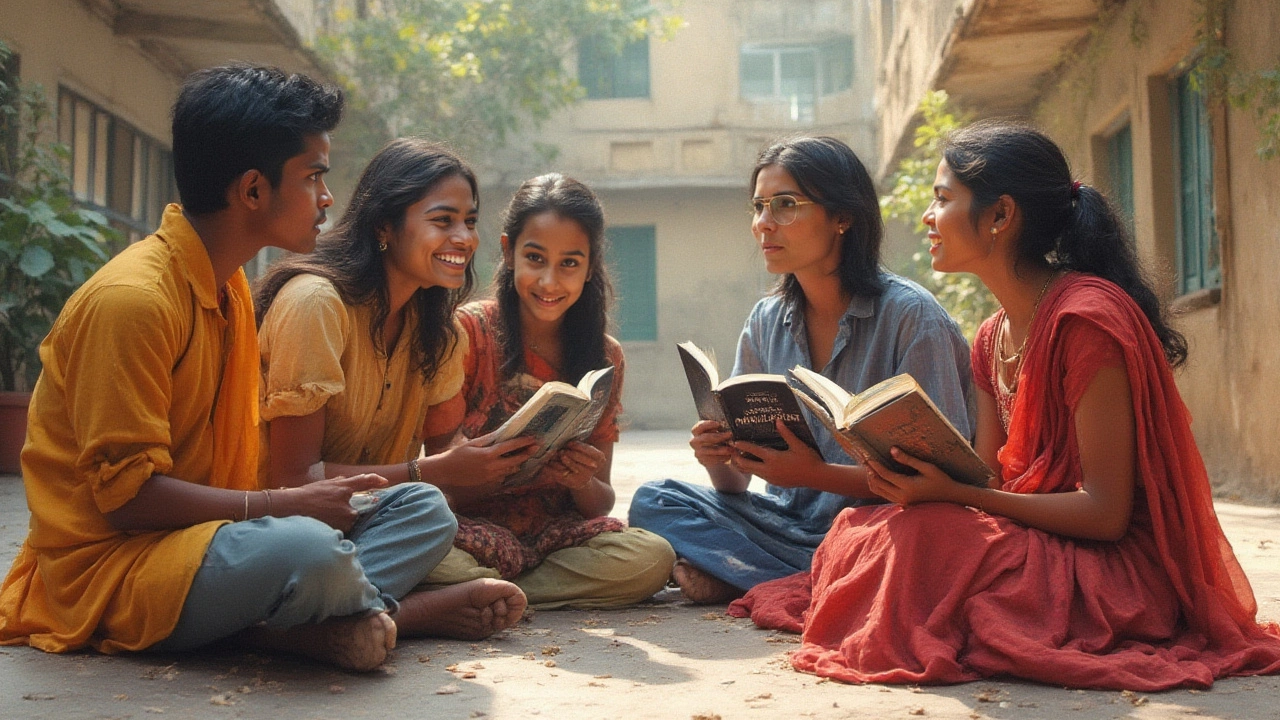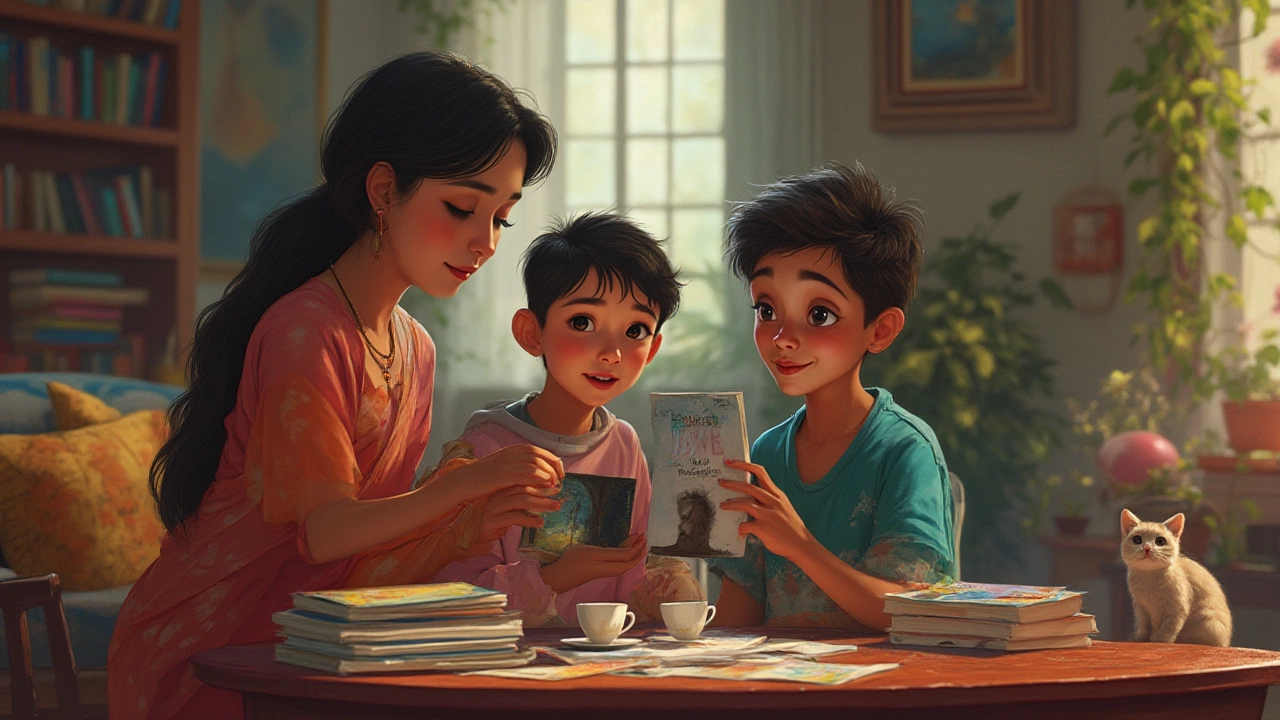How to Tell If a Book Isn’t YA: Key Differences and Tips
 Jul, 5 2025
Jul, 5 2025
It always comes as a shock that some people think every book with a teenager in it is automatically for teens. Nope—age is just the start. Some of the most intense books in literature star characters younger than you’d expect. The girl in ‘Room’ is five. Holden Caulfield in ‘The Catcher in the Rye’ is sixteen, but you’re way off if you call that a YA book by today’s standard. So, what actually makes a book not YA? Plenty of readers and even authors mix things up, and sometimes, a book blurs the line so much that you have to look past the cover and the character’s birthday. Here’s what really separates the young adult shelf from the rest of the bookstore.
Main Differences Between YA Books and Non-YA Titles
We can’t just go by the main character’s age. YA (young adult) usually zeroes in on teens—think 13 to 19—but adult fiction sometimes does, too. The real issue comes down to themes, voice, tone, and who the story’s talking to. In YA, everything is filtered through teenage eyes and priorities. The complications, heartbreaks, and drama all orbit questions of identity: Who am I? Where do I fit? The stakes are about firsts—first love, first betrayal, first time seeing how twisted the world can be. That’s why you see messy coming-of-age arcs and hopeful (even when bittersweet) endings.
But what about books that have young characters but don’t feel like YA? Take ‘A Little Life’ by Hanya Yanagihara. Most main characters are young when the story starts. The tone, though, is brutal, unfiltered, and meant for adults who can handle trauma on a massive scale. YA can tackle tough stuff, but it usually circles around hope. Adult fiction doesn’t have to pull punches; it can leave you gutted. And then there’s the style—YA often has relatable, immediate prose. Adult fiction can be dense, experimental, or dark as hell without worrying about gatekeepers or school librarians. Publishers Weekly pointed out in 2024 that YA sales have dropped sharply, but crossover adult titles (think ‘Fourth Wing’ and ‘The Song of Achilles’) keep getting picked up by actual teens looking for something deeper or edgier. That’s not just marketing—it’s the books themselves daring readers to go beyond the easy labels.
There’s also topic scope. A YA novel almost always deals with internal struggles and close social circles: family, school, friendships, a narrow but familiar world. Adult fiction can tumble into sprawling worlds. You might start with a fifteen-year-old protagonist, but if it dives deep into generational history, politics, or heavy existential dread, you’re out of YA territory. Sex, violence, and language aren’t automatic disqualifiers—Tiffany D. Jackson’s YA books go there—but books that explore these themes without a hint of didacticism or a focus on adolescent experience are usually not YA. The focus in adult fiction is less on surviving high school and more on surviving life.

The Role of Publishers, Bookstores, and Marketing
Here’s the part most casual readers miss: where a book lands depends a lot on marketing. YA as a category barely existed thirty years ago. Back then, books with teens just got lumped in with adult fiction. Today, a book is ‘YA’ if a publisher says it is—especially in the U.S. For example, before 2000, you’d find books like ‘The Outsiders’ or ‘To Kill a Mockingbird’ shelved with classics, not in a teen section. HarperCollins only started pushing YA as a distinct line in the late 1990s, and it’s become a billion-dollar business since. But labels don’t always stick clearly. Publishers have been known to bounce the same manuscript between their teen and adult arms, depending on sales projections and trends. E. Lockhart’s ‘We Were Liars’ was pitched in both directions before landing as YA—mainly for its voice and themes.
Retailers play along too. Bookstores and libraries love categories. They want clear labels: is it for teens, or is it for adults? But the actual book content might not fit those boxes. That’s why you’ll find books like ‘Eleanor Oliphant Is Completely Fine’ on adult shelves despite featuring a social outsider with coming-of-age moments. Meanwhile, a book like ‘Thirteen Reasons Why’ is shelved as YA because the premise is designed for teen readers, even with some heavy, dark content that sparked debates in classrooms and on Netflix.
Don’t trust the cover, either. In recent years, publishers have been notorious for swapping covers and blurbs to match whatever market is hot. Look at ‘The Absolutely True Diary of a Part-Time Indian.’ In the U.S., it’s YA. In the UK, it’s in adult literary fiction. Same book, different shelves. If a book has illustrated or abstract covers, it’s probably reaching for a YA crowd. Moody photos or stark text design? It’s likely pitched as adult.

How to Spot a Book That’s Not YA: Practical Tips
So let’s cut to the chase. If you want to tell whether a book is not YA, you need some real markers. Here’s what I look for:
- Voice and Point of View: Does the book use an adult narrator reflecting on youth, or is it in-the-moment and soaking in teenage reality? If it’s filtered through hindsight, that’s a good sign it isn’t YA.
- Mature Themes with No Concession: Some themes—violence, sex, trauma, moral ambiguity—can be in YA. But when the author refuses to soften, coach, or explain for adolescent readers, you’re in adult lit.
- Pacing and Structure: Does the story linger for pages on philosophy, inner monologue, or time jumps covering decades? YA usually pushes the plot forward and keeps readers feeling like they’re inside the moment-to-moment action. If not, probably not YA.
- World Scope: YA stories, even those with sci-fi or fantasy backdrops, tend to focus on the character’s personal world. If the plot gets lost in generations, societies, politics, or complicated side plots, think adult fiction.
- Intended Audience: This is the most important and usually the most ignored. If the story exists to be a mirror for an adolescent’s coming-of-age questions, it’s YA. But if it’s holding up a mirror for grownups—making them think about their own lives or mistakes—it’s adult fiction, even if the main characters are young.
Think about examples. ‘Never Let Me Go’ by Kazuo Ishiguro has teens, but the themes—mortality, loss, resignation—read heavy and adult. Donna Tartt’s ‘The Secret History’ features college kids, but it’s dense, bleak, and aimed at an audience that’s way past dorm life. On the other hand, Leigh Bardugo’s ‘Six of Crows’ has criminal teens in a gritty world but still builds for a YA crowd—fast pacing, character-driven, little time for existential brooding.
There’s nothing wrong with blurring the lines. Genres and age categories aren’t fences—they’re more like signs on country roads, giving you a rough idea of where you’re headed. If your heart is in a story and the voice sings for your age—teen, adult, or somewhere in between—read it. Don’t let a sign over a bookshelf tell you what to love.